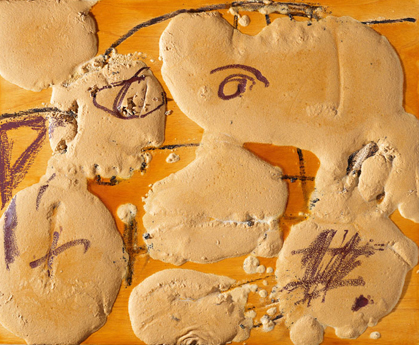The man referred to as 'Spain's greatest living artist' has made a serious mistake, says Andrew Graham-Dixon; plus new work in London
The reputation of an artist, once established, is not easily undermined: too many vested interests, commercial and critical, are bent on sustaining it; there have been too many exhibitions of the work; too many museums and too many private collectors have invested in it. The result is a form of creeping critical inertia, a strategic blindness to the embarrassing possibility that the artist's powers may be in decline or that his imagination may be on the wane. This does him no real favours, even if it does keep the money coming in. The danger is that he may end up believing his own publicity.
''Antoni Tapies: A Summer's Work'', at Waddington Galleries, suggests that the man customarily referred to as Spain's greatest living artist has made just that mistake. At 73, Tapies has been turned into an institution in his own country. In 1990 the Fundacion Antoni Tapies, a permanent museum devoted to his work, was established in his honour in Barcelona, and during the course of his career he has been awarded an excess of those ''internationally prestigious'' prizes which exist for the sole purpose, it would seem, of miring senior and already wealthy artists in their own self-importance: the Order of Art and Literature from the French Government, the Golden Lion of Venice, the Peace Prize from the United Nations for Spain. During it all, his work has subsided, gently but inexorably, into chic mediocrity.
Tapies was, once, an innovative and influential artist. The battered abstracts that he created in the 1950s and 1960s were tacit protests against the Francoist regime: pictures that evoked state brutality in their scarred and pockmarked and graffiti-ised surfaces,...


